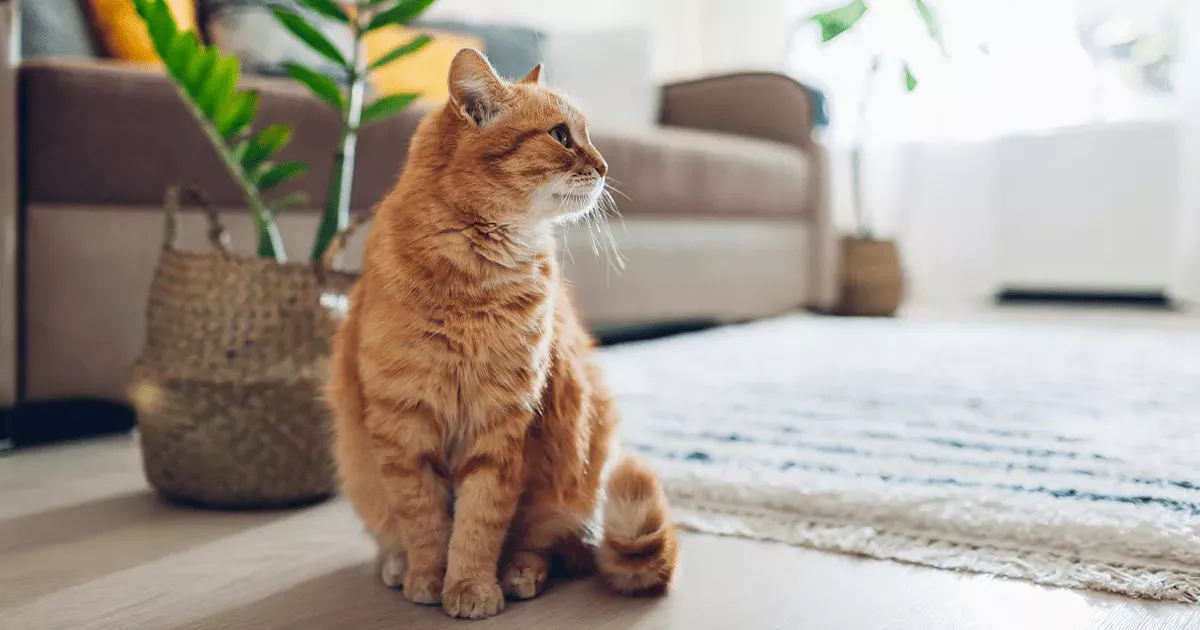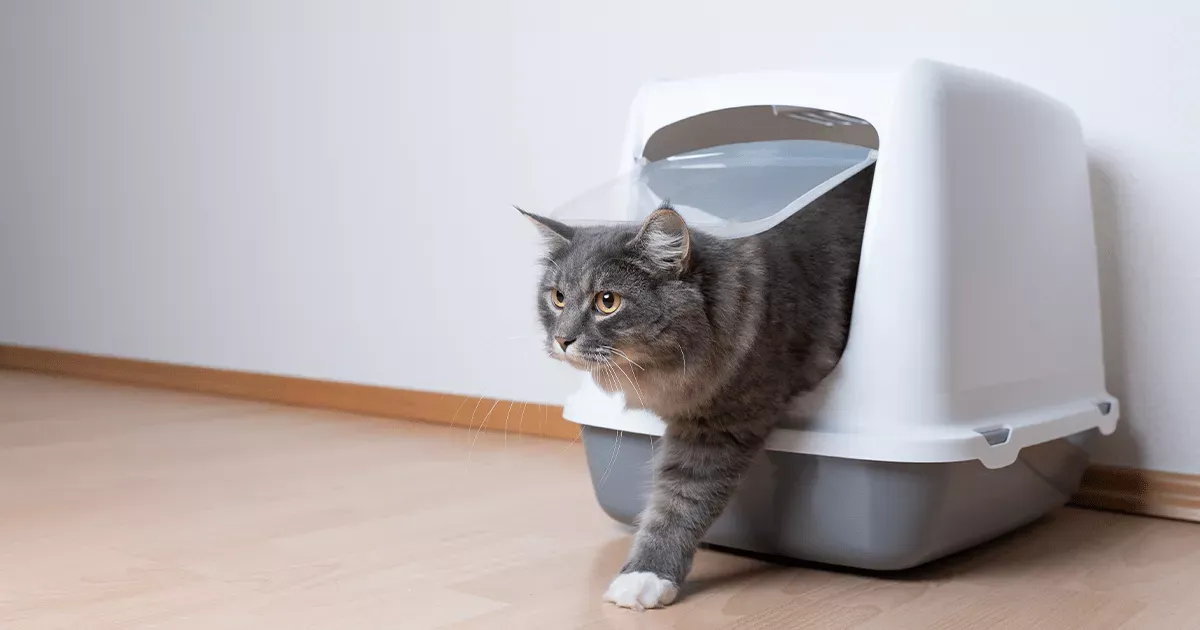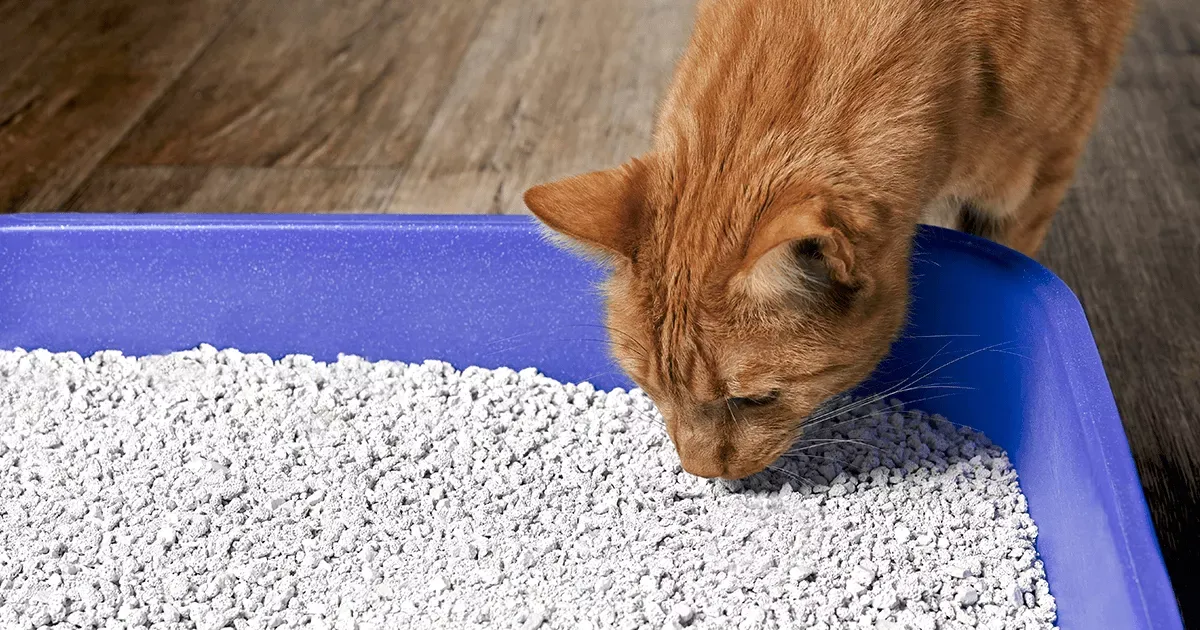Discovering urine spots around your home can be distressing for any cat owner. If your cat is spraying urine on walls, curtains, or furniture instead of using the litter box, you’re not alone—this is a common issue known as cat spraying or urine marking. Unlike simple accidents, cat spraying is often a territorial behavior triggered by stress or insecurity. Understanding the difference between cat spraying (vertical marking) and house soiling (horizontal urination) is key to addressing the problem effectively and restoring harmony in your household.
By Jimmy Bratley BSc BVetMedSci BVMBVS MRCVS – Veterinary Advisor
Urine Marking vs House Soiling: Key Differences
Cat behaviors like spraying and house soiling serve different purposes, and spotting the distinction helps target the right solutions. Urine marking, also called spraying, involves a cat backing up to a vertical surface with its tail raised and quivering, releasing a small amount of pungent urine backward. This is a communication method, signaling territory, presence, or mating availability to other cats. The strong odor comes from concentrated urine laced with pheromones that humans find particularly off-putting.
In contrast, house soiling occurs when a cat squats to urinate larger volumes on horizontal surfaces like carpets, beds, or cushions. This isn’t about marking but often stems from discomfort, medical issues, or litter tray dissatisfaction. Cats that spray typically continue using their litter box for regular elimination, while house soiling indicates avoidance of the tray altogether.
 Ginger cat sitting calmly on the floor, illustrating typical relaxed cat posture
Ginger cat sitting calmly on the floor, illustrating typical relaxed cat posture
Causes of Cat Spraying and Urine Marking
Cats are sensitive creatures, and cat spraying often erupts from environmental stressors. Any disruption to their routine—like a new baby, additional pets, frequent visitors, or home renovations—can make them feel insecure. Cats dislike change; introducing new furniture or strong paint smells might prompt spraying on nearby walls or items to reclaim security through scent marking. Multi-cat households amplify this, as territory disputes lead to indoor spraying near doors and windows.
Outdoor factors play a role too. Unneutered cats, especially males, spray to advertise mating availability, while intact females do the same during heat cycles. Even neutered cats may spray if stressed, though sterilization reduces this by up to 90%, per veterinary studies from the American Association of Feline Practitioners (AAFP).
How to Stop Cat Spraying: Practical Tips
Act swiftly to discourage repeat spraying and eliminate lingering scents that attract your cat back. For fresh marks on hard surfaces, blot excess urine and clean with enzymatic cleaners free of ammonia—ammonia mimics urine odor and invites more marking. On fabrics, use pet-safe enzyme products, allowing full dwell time before vacuuming.
Enhance your cat’s sense of security with pheromone diffusers like FELIWAY Optimum, which mimics calming facial pheromones to reduce stress-related spraying. Apply FELIWAY Classic Spray directly on marked spots post-cleaning to deter returns. Minimize stressors by maintaining routines, providing vertical spaces like cat trees for territory oversight, and blocking access to trigger areas temporarily. Consult a vet to rule out underlying health issues, as pain can mimic behavioral spraying.
Signs and Causes of House Soiling in Cats
House soiling demands urgent attention, as medical causes are frequent culprits. Urinary tract infections (UTIs), bladder stones, crystals, or inflammation cause painful urination, leading cats to avoid litter trays. Systemic issues like diabetes, kidney disease, or hyperthyroidism increase urine volume and frequency. Behavioral triggers include inadequate litter trays—too small, noisy locations near appliances, or disliked substrates like scented litters.
Aging cats face mobility challenges entering high-sided trays, while multi-cat homes spark competition if trays are scarce. Recent changes, such as redecorating strong odors or restricted outdoor access due to weather, can prompt soiling in preferred spots.
 Cat exiting the litter tray, showing post-use behavior
Cat exiting the litter tray, showing post-use behavior
Effective Strategies to Prevent House Soiling
Prevention starts with a vet check-up to exclude medical problems—early diagnosis prevents escalation. Optimize litter setup: Provide one tray per cat plus one extra, placed in quiet, accessible spots away from food and noise. Experiment with substrates—fine clumping litter suits many, while others prefer unscented wood pellets. Ensure trays are spacious for turning, low-entry for seniors, and scooped daily with full changes weekly.
Clean soiled areas thoroughly with enzymes and restrict access initially. Plug in FELIWAY Optimum for overall calm, especially in multi-cat homes. Relocate a tray to the soiling site temporarily after deep cleaning, as cats may prefer that location’s feel. Uphold routines with consistent feeding, playtime, and affection—avoid punishment, which heightens anxiety.
 Ginger cat curiously sniffing the litter box substrate
Ginger cat curiously sniffing the litter box substrate
Final Thoughts on Managing Cat Spraying and Urination Issues
Distinguishing cat spraying from house soiling empowers targeted fixes, whether through stress reduction, litter improvements, or veterinary care. Most cases resolve with prompt cleaning, environmental tweaks, and pheromone support, helping your cat feel secure again. Always prioritize a professional vet exam for sudden changes, as health underlies many behaviors.
For multi-cat harmony or home adjustments, resources like FELIWAY products prove invaluable. Share your experiences in the comments, explore more cat care tips on our site, or consult a vet today. Sign up for our newsletter for expert advice on pet wellness.
References:
- American Association of Feline Practitioners (AAFP) Feline Behavior Guidelines.
- FELIWAY resources on spraying and soiling: FELIWAY UK.
- Veterinary insights from MRCVS professionals.
